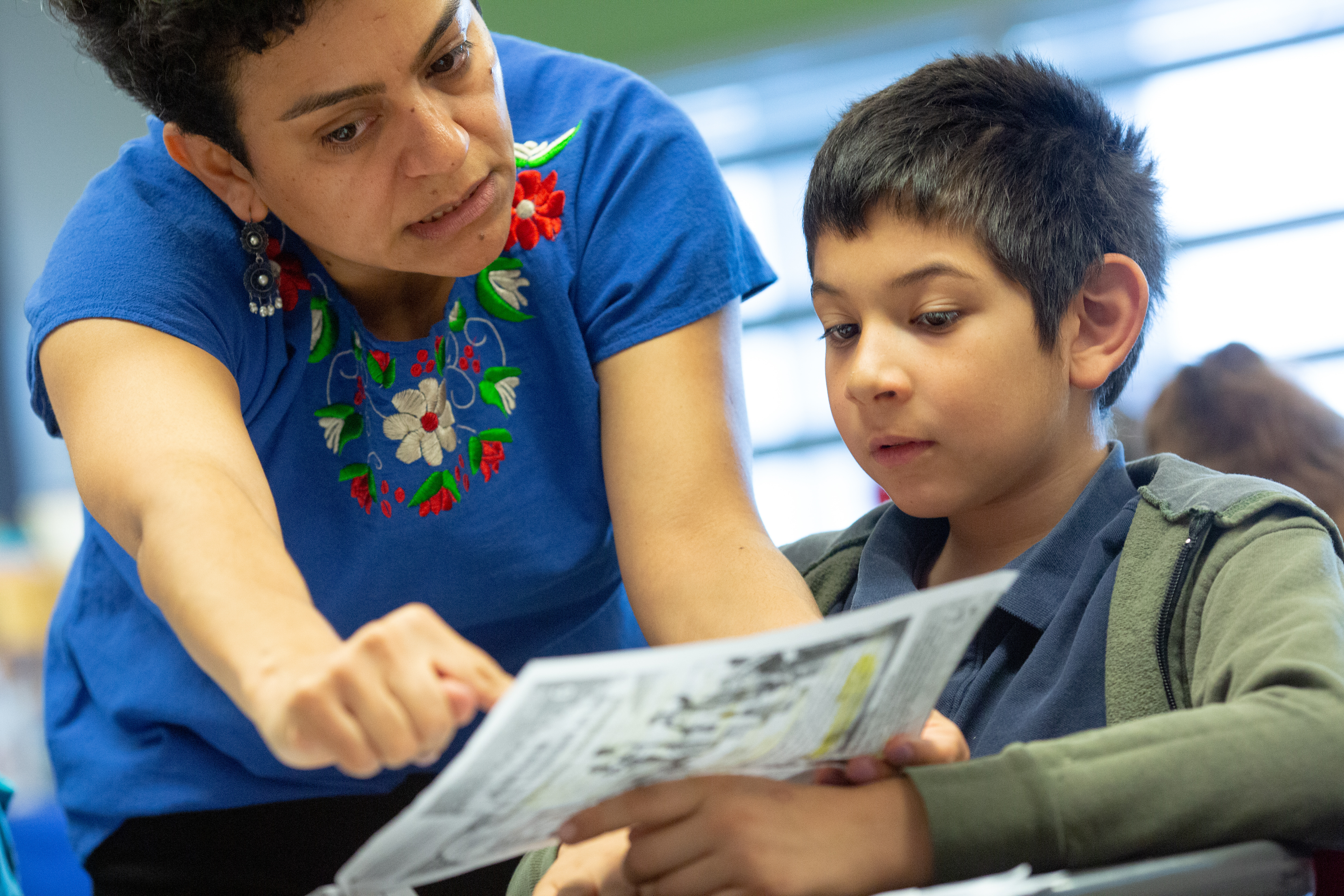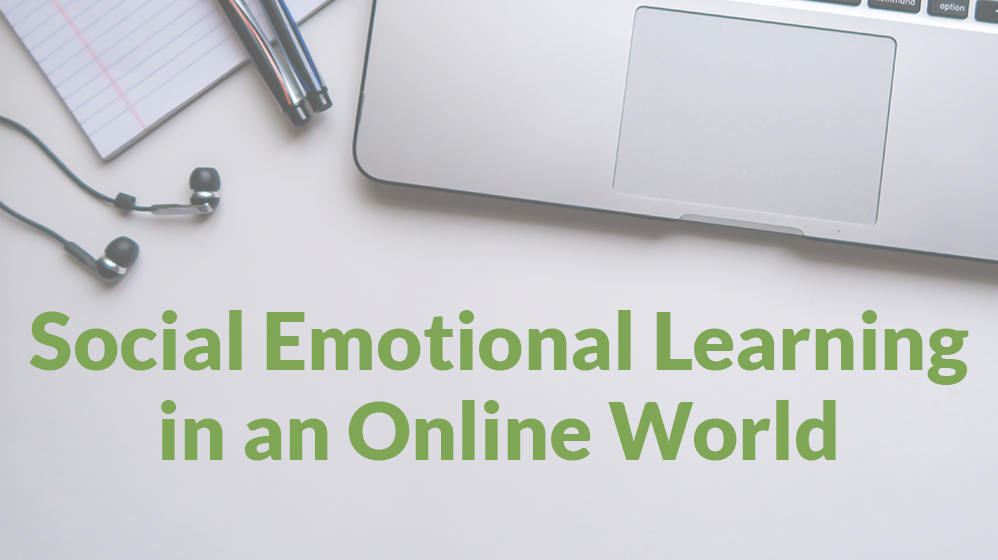Much of the country will be providing remote learning this fall to students who will be in dire need of connection, community, and support for their emotional well being. CASEL (Collaborative for Academic, Social, and Learning) standards will be critical, but how do we ensure our students will receive the emotional curriculum they so desperately need?
Direct instruction of social emotional skills has become a pillar in our school systems today. While many districts will make sure to include a variety of activities and online resources for families to address social emotional needs, our real impact will come from integrating these standards into the content we teach. This ensures that students will be getting consistent exposure to social skills with frequent opportunities to apply them in their learning communities.
How can I fit standards into academic time?
Cultivate community: The first two competencies listed by CASEL are great to keep in mind as you structure your learning community. Make sure to focus on these while developing your routines, expectations, and classroom management systems.
- Self-Awareness: This competency looks at a student’s ability to identify their emotions, have accurate self-perception, recognize their strengths, demonstrate self-confidence, and show self-efficacy. In content, teachers can use literature as a rich source of exploring and identifying emotions. Students can infer, draw conclusions, and connect with characters in a variety of ways. This work can be a bridge for teachers to address the plethora of emotions students experience throughout their day. When teachers explicitly identify and verbalize emotions they help kids understand that emotions are neither good or bad, but rather an internal communication system that can be navigated in healthy ways. Integrating emotional language into our conversations with students while either conferring about academic growth or when reflecting on classroom behaviors promotes self-awareness while helping to create a trusting student-teacher relationship. The additional skills listed under this competency can easily be tied into Carol Dweck’s work on growth mindset. Reflection is a powerful tool to instill in our children. It can be built in throughout the day. Assignment and assessment reflections give students an opportunity to accurately note what they did well on, what they improved on, and set goals for future learning. It can also focus on behaviors that the students felt either helped or hindered their progress. Consider frequent reflections as an opportunity for students to learn more about themselves as learners and also a time for them to connect with each other as a learning community. Have students recall what they have learned and give “student cred” to peers who may have helped push their thinking. Celebrating this form of reflection is a great way to promote student confidence and connections in your learning community.

- Self-Management: The behaviors that are noted under self-management include impulse control, stress management, self-discipline, self-motivation, goal setting, and organizational skills. These skills are great when addressed at the high school or middle school level with advisory teachers or in homeroom classes. These times of day can be an anchor for students as they learn systems to manage assignments, seek assistance, and set individualized goals with their advisors. With younger students, organizational systems and strategies can be interwoven into classroom routines for all children. Children learn to participate in material checks, use taught systems to access help, and engage in routines that build sustained attention before class breaks. To combat stress your students may be enduring, consider gratitude sharing. This is a healthy strategy for overcoming challenges or coping with negative emotions. Some teachers provide a physical space for students to display their gratitude, while others prefer to offer a select time of day for students to share out. This can be done through an online platform as well. For younger students, it may be beneficial to provide topics that will focus their thinking. For example, you may ask students to share a person they are grateful to have in their lives or a talent they are grateful they possess. Topic selection can be a beneficial means to customizing this strategy around your classroom’s unique needs.
Connect Content: Below you will see the last three social emotional competencies listed by CASEL. These include skills that can be embedded into learning activities and lesson design. When these naturally become a part of our content, we quickly realize how we can develop the whole child, providing content acquisition along with personal growth and development.
- Social Awareness: This competency lends itself beautifully to all content. It includes perspective-taking, empathy, appreciating diversity, and respecting others. This should be considered when selecting literature and resources, ensuring that you are presenting a wide range of cultures, races, and communities. After we select our resources and literature, we then have the task of hosting rich dialogue with students to promote their understanding of how our unique experiences impact the way we see and digest the world we live in. Honing our student’s perspective-taking skills will lead to more empathic communities where students can learn the art of listening to other points of view while respecting people who may have different ideas or hold different beliefs. Socratic seminars are great for this as they teach students how to actively listen, paraphrase, ask clarifying questions, and respectfully disagree.
- Relationship Skills: Educators know the importance of group work as we build 21st century skills that will be required in all work forces. This competency looks at communication, social engagement, relationship-building, and teamwork. When you boil these skills down, we look at behaviors such as listening, contributing ideas, compromising, assisting others, and responsibility or work production in a group. These academic behaviors can be more explicitly spelled out in student rubrics so kids can have a better understanding of the skills required for success when working with others. Video is a great means of highlighting these skills in action so students can actually see what they look like, as we often operate on automatic pilot not realizing how our behaviors impact others. A critical step in using video is pairing it with a class created rubric that spells out the successful academic behaviors you are looking for. Once a rubric is created you can then have students grade themselves or have them watch exemplar videos that are “graded” together as a class. This can lead to rich discussions about what working as an effective team should look like.

- Responsible Decision Making: The utopia of all social domains we want our kids to achieve lies within this competency. This includes identifying problems, analyzing situations, solving problems, evaluating, reflecting, and ethical responsibility. These critical skills are the cornerstones of academic success and social emotional health. We can practice these skills by analyzing non-fiction text or literature. For example, content areas such as social studies or science provide a rich platform for discussing how leaders and historical figures have impacted today’s society. Students have to identify the complex problems that occurred, what the possible solutions were, and the implications that stemmed from each of those solutions. We should also be challenging students, especially in middle school and high school, with book clubs that bring in rich literature addressing important topics such as social injustice, mental health issues, poverty, orientation issues, and more. Host classroom discussions that are centered upon how each student can make daily decisions that will lead to stronger communities focused on equality and the empowerment of others. Reading, science, and social studies are not the only academic areas that can incorporate these skills. Think about how we use numbers in math. People in all professions use math skills for a variety of reasons including identifying problems, decision making, and responding to problems with ethical decisions. Consider incorporating PBL (Project Based Learning) to bring these skills to life. Kids can identify a real world problem and together spend time exploring and sharing out possible solutions. This not only integrates content, but also provides context to math applications in engaging ways.
How can instructional coaches support teachers with including SEL standards in their lessons?
As we work alongside our teachers to meet the challenge of providing whole child learning online we must carry a lens of “connection”. Every learning target should be paired with this critical question: How are students connecting with each other, the teacher, and the content? As we support their development of lessons, try providing checklists or guiding questions that teachers can utilize to ensure that their lessons have social opportunities embedded, enhancing the way children connect with content. If you need a starting point, here is my Connect Check I created for teachers I work with. Opportunities are everywhere if we keep our eyes open and our hearts focused on using academic skills to grow learners socially and emotionally.
Educators, how are you planning on supporting the SEL needs of your students and teachers?
Feel free to share in our comments section.







